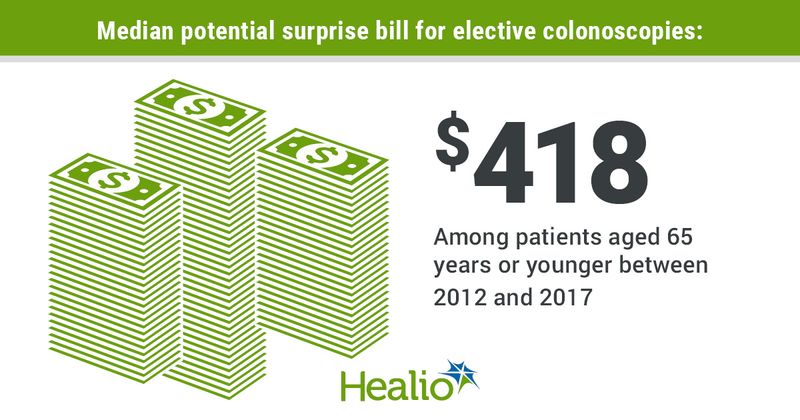Nearly 1 in 8 elective colonoscopies result in out-of-network claims
Click Here to Manage Email Alerts
About 12% of elective colonoscopies during a recent 5-year period led to out-of-network claims that averaged hundreds of dollars more than the typical insurance payment, data in Annals of Internal Medicine show.
“Colonoscopy is such an effective cancer prevention tool,” James M. Scheiman, MD, chief of the division of gastroenterology and hepatology at the University of Virginia School of Medicine, told Healio Primary Care. “We need to be sure unexpected, out-of-pocket costs do not discourage patients from receiving the test.”

In one of the latest studies to explore surprise billing, Scheiman and colleagues reviewed a claims database to estimate the prevalence, amount and source of out-of-network claims for commercially insured adults aged younger than 64 years who had an elective colonoscopy between 2012 and 2017.

Researchers reported that of 1,118,769 elective colonoscopies conducted by in-network endoscopists and facilities, 12.1% (95% CI, 11.2-13.1) involved out-of-network claims with a median potential surprise bill of $418 (interquartile range [IQR] = 152-981). Out-of-network anesthesiologists were involved in 64% of procedures (median potential surprise bill, $488 (IQR =145-1186]) and out-of-network pathologists were involved in 40% of procedures (median potential surprise bill = $248 (IQR = 153-554).
Also, the likelihood of an out-of-network claim was significantly higher when an intervention (eg, biopsy) was completed during the colonoscopy vs. cases without one (13.9% vs. 8.2%; difference, 5.7% [CI for difference, 4.9%–6.5%]). When interventions were performed, 51% of potential surprise bills involved pathologists and 56% involved
anesthesiologists. In cases without interventions and only a visual inspection was performed, 95% of potential surprise bills involved anesthesiologists.
Scheiman, who was also an author on a previous study that examined surprise billing, said both studies’ findings underscore the need to “develop strategies to offer colonoscopy to all at a fair price for the entire episode of care.”
He suggested that endoscopists and hospitals team up with in-network anesthesia and pathology providers, and that providers should consider endoscopist-provided sedation instead of deeper anesthesia. Scheiman also said that “not all low-risk polyps need to be sent for pathological evaluation.”
